10 Animals Facing Extinction in 2025
In 2025, many species around the world are at serious risk of extinction. An endangered species is one that is very likely to disappear either or within specific regions. Reasons such as habitat loss, poaching, invasive species, and climate change contribute heavily to their decline. Human activities like deforestation, pollution, and excessive resource use significantly threaten these species. The International Union for Conservation of Nature (IUCN) keep the Red List, which monitors the conservation status of species around the globe and they classifying nearly 4,000 species are critically endangered, meaning they face such severe threats that they could soon become extinct in the wild.
Although some nations have enacted laws to protect these animals by limiting hunting, controlling land use, or creating protected areas, more efforts are needed. Conservation efforts such as breeding programs and restoring habitats give us some hope, but time is limited. This article explores 10 of the most endangered species in 2025 and the efforts being made to protect them.
Rhinos
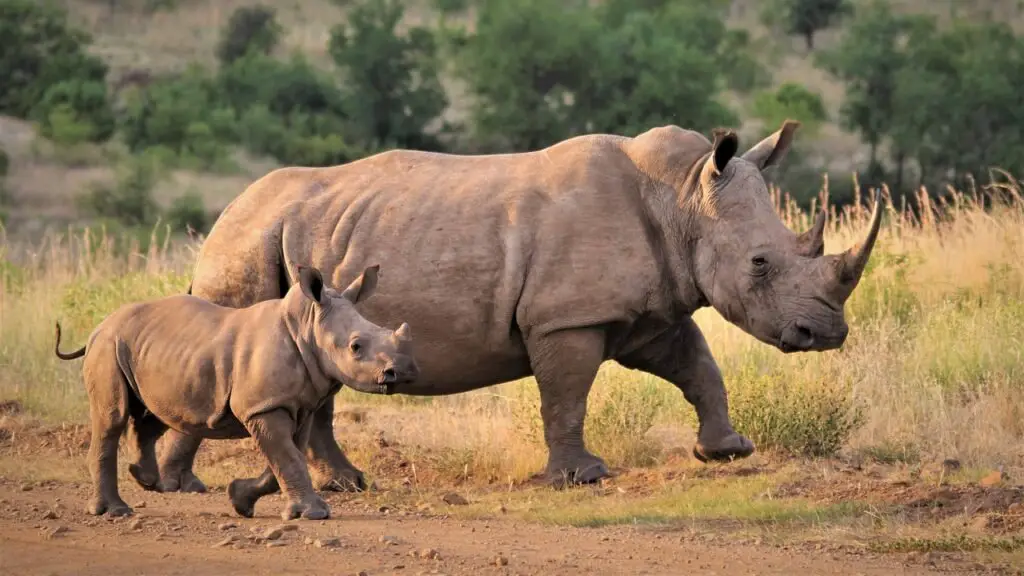
Rhinos are critically endangered, with fewer than 30,000 remaining in the wild today. However, not all rhino species are endangered. Black rhinos, Javan rhinos, Northern white rhinos (a subspecies of white rhinos), and Sumatran rhinos are classed by the IUCN as critically endangered. According to the International Rhino Foundation, less than 60 Javan rhinos currently exist in the world. The Javan rhino is one of the rarest large mammals on earth, and was declared extinct in Vietnam in 2011. Northern white rhinos are possibly extinct in the wild, with only two females remaining in captivity at Ol Pejeta Conservancy in Kenya. The last male, Sudan, died in 2018 of age-related complications, rendering the subspecies functionally extinct due to the absence of breeding males.
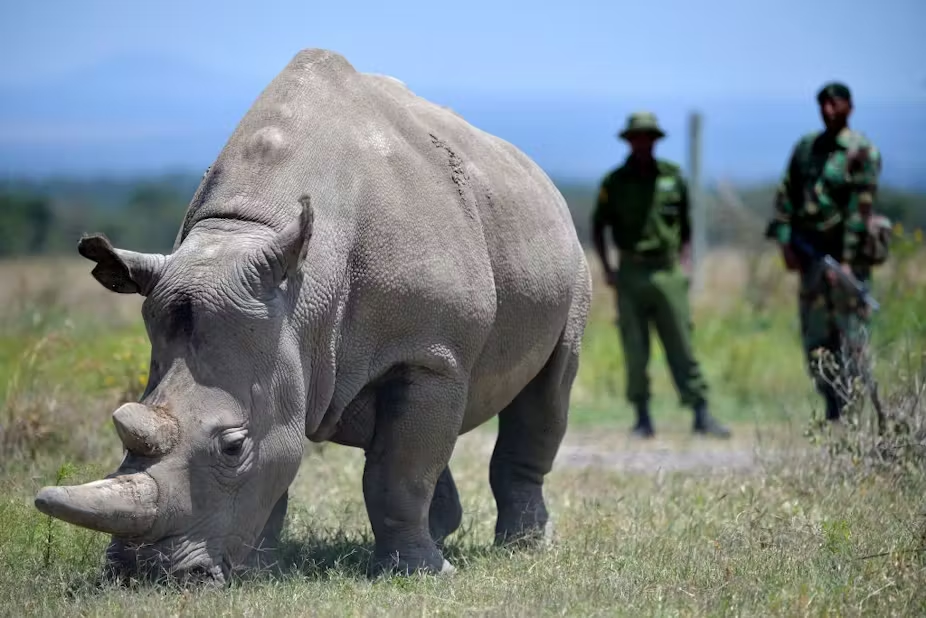
There are only about 30 Sumatran rhinos left in the world, making them critically endangered. Black rhinos, while slightly more numerous, have a population of approximately 6,195 individuals remaining across South Africa, Namibia, Zimbabwe, Tanzania, and Kenya. Their population declined by 96% between 1970 and 1995, but conservation initiatives have helped and now their numbers are slowly rising.
Small but significant progress has been made in conserving rhino populations, particularly through conservation efforts in India and Nepal. However, the long-term survival of rhinos relies on ongoing vigilance, global collaboration, and strict enforcement of anti-poaching laws to ensure these magnificent creatures are protected for future generations.
Amur leopards

Amur Leopards are the world’s most endangered big cats due to poaching and habitat loss. Their population once dropped just to 30 individuals in the 1970s. But, thanks to conservation efforts like the creation of the Russian Land of the Leopard National Park, their population has grown to about 100 today. However, according to the International Union for Conservation of Nature (IUCN) Amur leopards are still critically endangered.
These leopards face several threats, such as habitat loss from deforestation, poaching for their stunning fur, and inbreeding due to their small numbers. Unlike most leopards, which are found in African savannahs or Southeast Asian jungles, Amur leopards are native to the forests of eastern Russia. Their historical range included parts of northeast China and the Korean peninsula, but now they are confined to a small area along the Russia-China border, where they depend on forests for shelter and hunt animals like deer and hares.
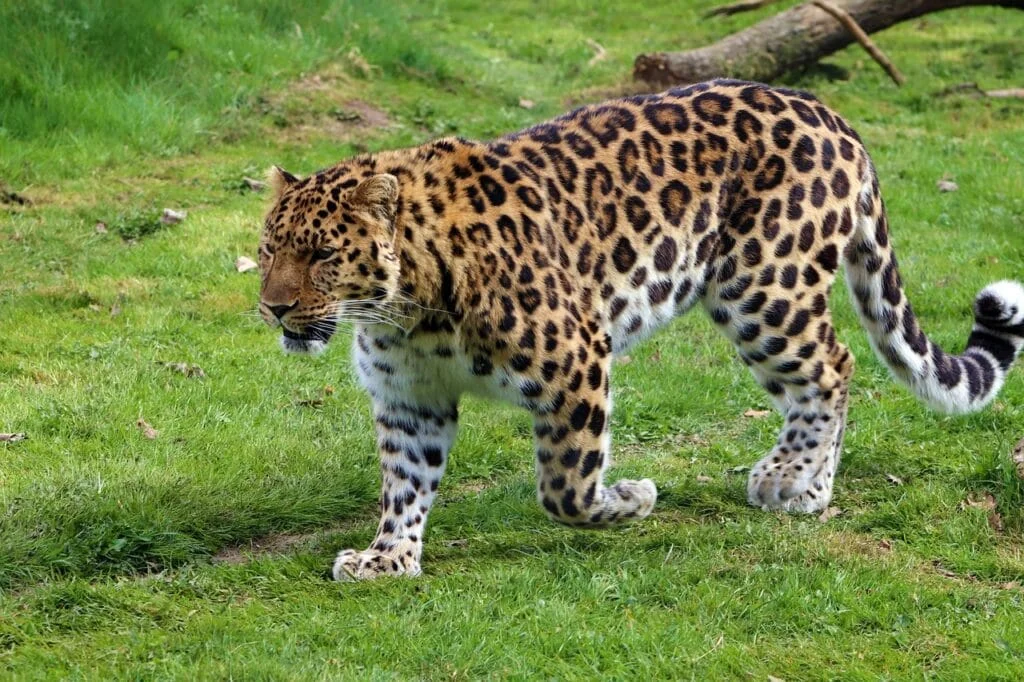
To protect Amur leopards, efforts include anti-poaching patrols to stop illegal hunting, habitat restoration to expand and improve their living spaces, and international cooperation between Russia and China to safeguard their cross-border range. Although these actions have helped stabilize their numbers, the challenges remain significant. The small population of Amur leopards makes them very susceptible to inbreeding, which can weaken them over time. Also, their limited habitat raises the chances of conflicts with human activities and more habitat loss. Ongoing and improved conservation efforts are crucial to ensure the survival of this critically endangered species.
Orangutans
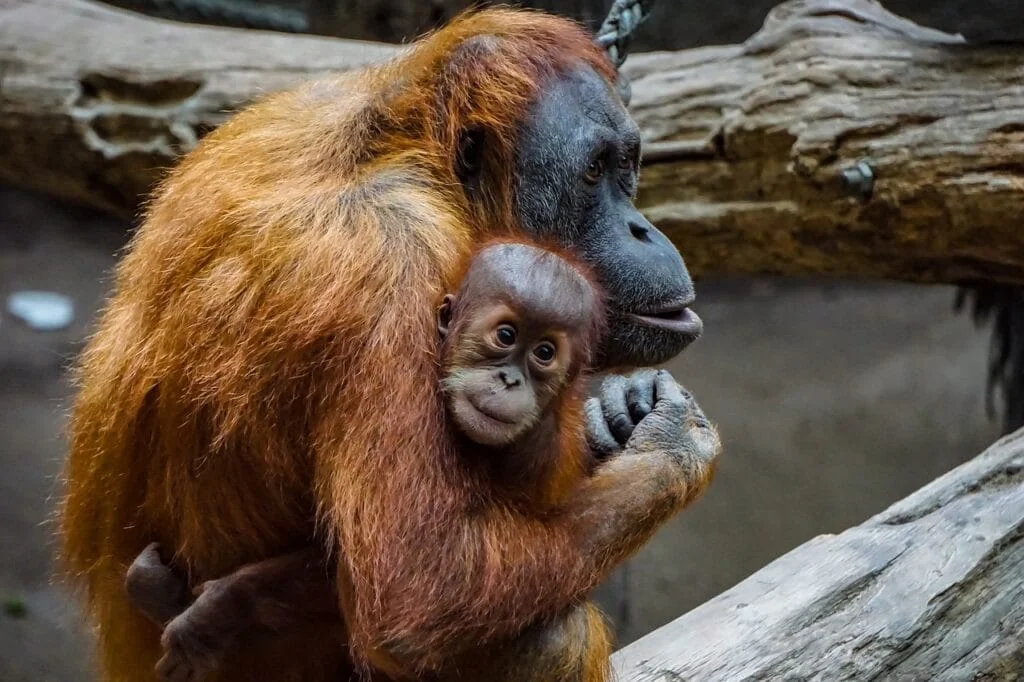
There are three species of orangutan. The Bornean orangutan, The Sumatran orangutan and the Tapanuli orangutan. According to the International Union for Conservation of Nature (IUCN) Red List all three of these species is critically endangered.
Over the past 60 years, the population of all three species has been declining rapidly due to human activities. Currently, there are about 104,000 Bornean orangutans, 14,000 Sumatran orangutans, and fewer than 800 Tapanuli orangutans left in the wild. These numbers reflect staggering losses, including a 60% decline in Bornean orangutans over the past six decades and an 80% drop in Sumatran orangutans over the last 75 years. The Tapanuli orangutan, the most endangered of the three, is nearly extinct, with only a few hundred left. Between 1999 and 2015 alone, the population of Bornean orangutans decreased by over 100,000.
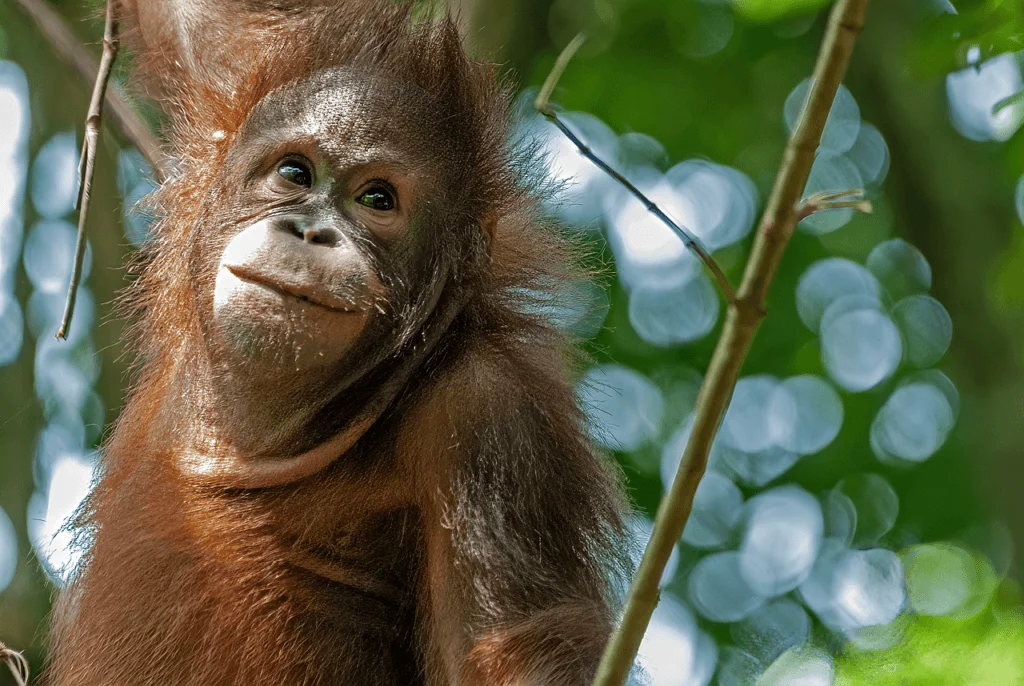
The main reason for the decline in orangutan populations is the loss of their habitat. Forests in Indonesia and Malaysia, where orangutans live, are being rapidly destroyed for timber extraction and the expansion of palm oil plantations. Orangutans depend on these forests for shelter and food. They build nests in trees for sleeping and rely on tree fruits for food. Without these forests, they cannot survive. Poaching is also a significant problem. Many orangutans are killed, especially mothers, so their babies can be taken and sold illegally as pets. The slow breeding rate of orangutans makes the situation worse, as females only give birth every 7 to 9 years.
Numerous conservation organizations are working to protect orangutans and prevent further population decline. These efforts include rescuing and caring for orphaned or captured orangutans, restoring damaged habitats, and enforcing tougher laws against poaching. Raising public awareness is also important to lower the demand for products that harm habitats, like unsustainable palm oil. However, in 2016, experts cautioned that without major changes to deforestation methods and better protections for orangutans, these great apes might become extinct in ten years.
Gorillas
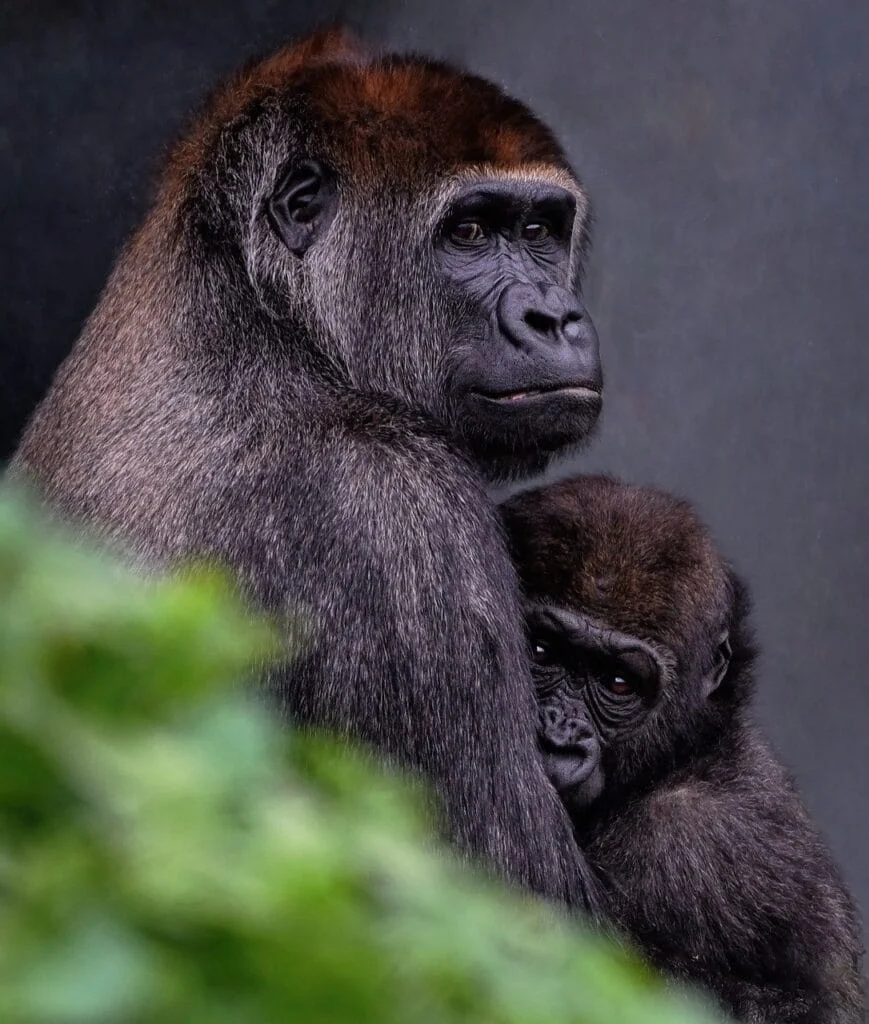
Gorillas, majestic inhabitants of Africa’s forests, are in serious danger of extinction. There are two main species of gorillas: the Eastern gorilla and the Western gorilla, each with two subspecies. Three out of these four subspecies are classified as Critically Endangered by the International Union for Conservation of Nature (IUCN). The exception is the Mountain Gorilla, a type of Eastern gorilla, which is listed as Endangered.
The Eastern gorilla, with an estimated 2,600 individuals remaining, is critically endangered, while the exact population of Western gorillas remains unknown but is reportedly declining.
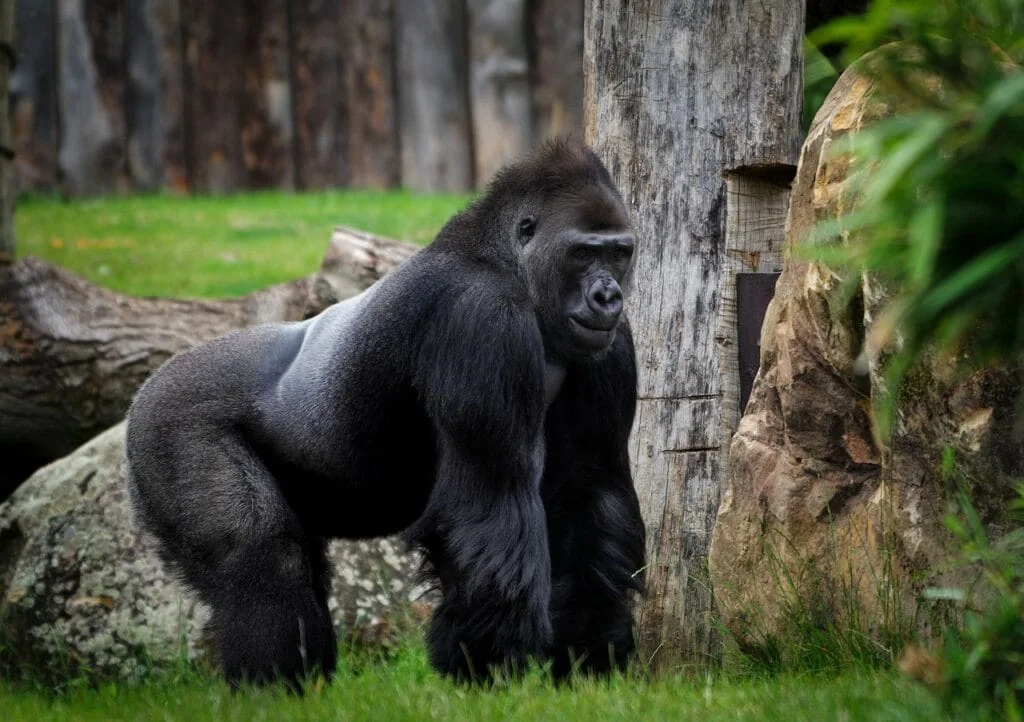
The Cross River Gorilla, a subspecies of the Western gorilla, is in particularly bad shape, with only 200 to 300 adults left in the wild. Like many endangered species, gorillas face several threats such as poaching, loss of habitat, diseases, and conflicts with humans. Their slow breeding rate makes things worse. Female gorillas usually give birth every four to six years and typically have only three or four babies in their lifetime.
Protecting gorillas involves fighting against poaching, saving their homes, and dealing with disease threats. Conservation efforts, such as legal protections, awareness campaigns, and ecotourism have contributed to stabilizing some populations, especially the Mountain Gorilla. However, these efforts are often hindered by limited funding, the remoteness of gorilla habitats, and ongoing human pressures like deforestation and poaching. Without continued and expanded initiatives, the future of these remarkable animals remains uncertain.
Yangtze Finless Porpoise
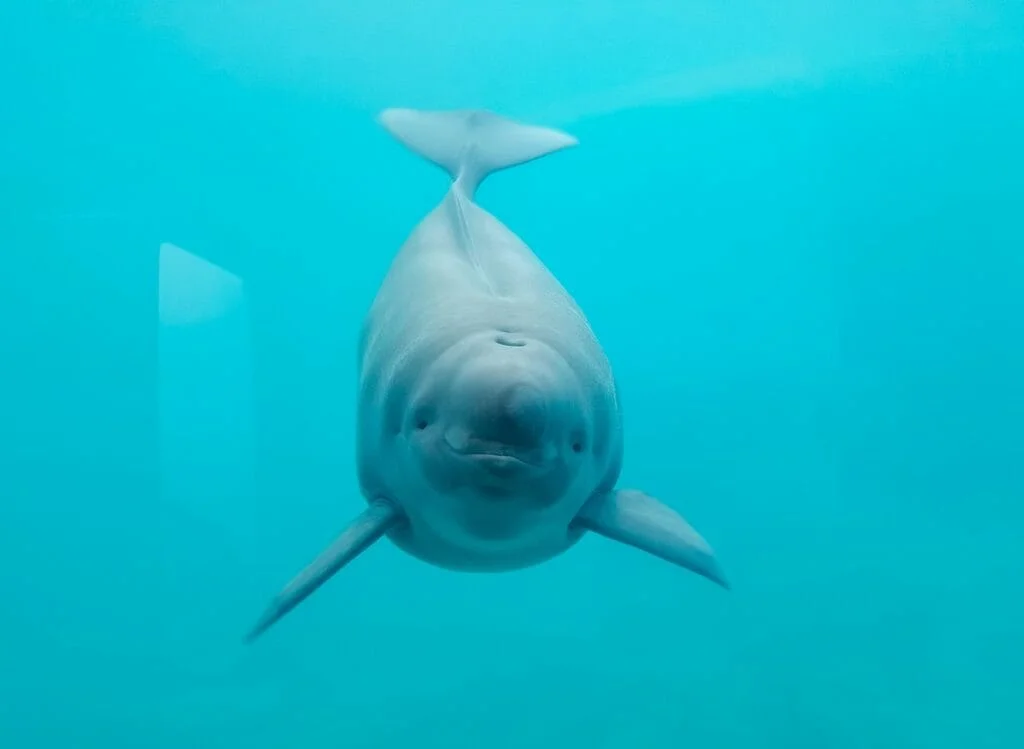
The Yangtze finless porpoise, affectionately nicknamed the “smiling angel of the Yangtze,” is a critically endangered freshwater mammal native to China’s Yangtze River. As one of the last freshwater cetaceans, it is vital for assessing the river’s ecological condition, according to the IUCN Red List. This special species faces many dangers, such as dam building, pollution, overfishing, and changes in the river’s environment. These issues create a serious threat to the porpoise. While fishermen do not target them directly, many get caught in fishing gear by accident, leading to high death rates. The heavy boat traffic on the Yangtze also causes many injuries and fatalities. Moreover, the porpoise’s habitat is polluted with harmful substances, putting their survival at risk.
Currently, the population of Yangtze finless porpoises is estimated to be between 1,000 and 1,800, with a concerning annual decline of 13%. If effective conservation actions are not taken, scientists warn that this species could vanish within ten years, similar to the Yangtze River dolphin, which disappeared in 2006.
To save the Yangtze finless porpoise, urgent and varied conservation efforts are needed. Important steps include restoring habitats, enforcing stricter pollution laws, and creating regulations to prevent accidental deaths from fishing. Raising public awareness and managing waterways sustainably are also crucial for protecting this species.Taking strong action now could help save this iconic species and improve the health of one of the world’s most significant rivers.
Saola
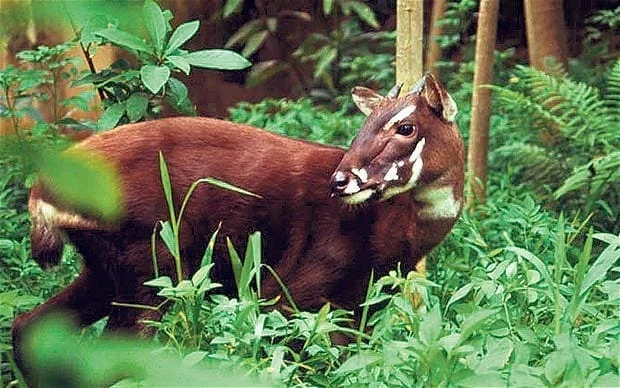
The saola, often called the spindlehorn or Asian unicorn, is one of the rarest animals in the world. With fewer than 100 individuals estimated to remain in the wild saola is criticallly endangered. Only a little has been uncovered about these mysterious and elusive mammals in the three decades since its scientific discovery. There are no saola in captivity and the last confirmed sighting of a saola was in 2013, captured by a camera trap in the dense forests of Vietnam’s Annamite Range.
The saola was declared critically endangered by the International Union for Conservation of Nature (IUCN) in 2003, highlighting its serious conservation status. Current estimates suggest there are fewer than 100 saola remaining in the wild, and the actual number might be even lower as they are hard to spot and surveys in their thick forest homes are challenging.
The biggest danger to the saola’s survival is illegal hunting. Although saolas are not specifically hunted, they often get caught in traps meant for other animals like civets, deer, and wild boar. These traps kill many animals each year, severely impacting the already vulnerable saola population.
The absence of saola in captivity underscores the species’ precarious situation, as conservationists lack opportunities to study or breed them in controlled environments. However conservation efforts aim to reduce snare usage, protect their habitat in the Annamite Mountains, and encourage collaboration between Vietnam and Laos, where saolas live. If immediate action is not taken to tackle these threats, this unique and important species may disappear forever.
Sunda Tiger
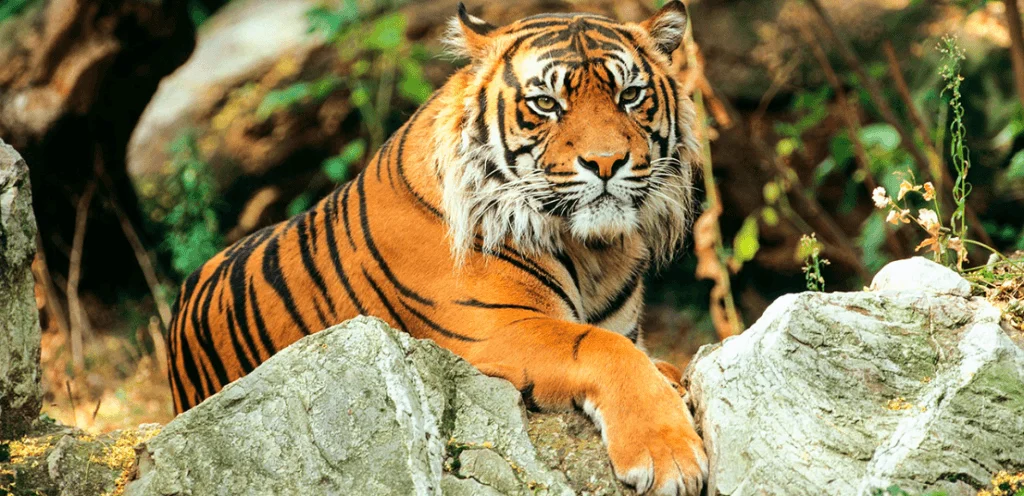
The Sunda tiger (Panthera tigris sondaica), is one of the rarest tiger subspecies and is classified as Critically Endangered by the International Union for Conservation of Nature (IUCN). Sunda tigers are smaller than other tiger subspecies, and found only on the Indonesian island of Sumatra. Today, tigers are the closest of all big cats to extinction with less than 3,900 in the wild over only 4% of their historical range. The Sunda tiger is one of the most vulnerable subspecies with less than 400 individuals left.
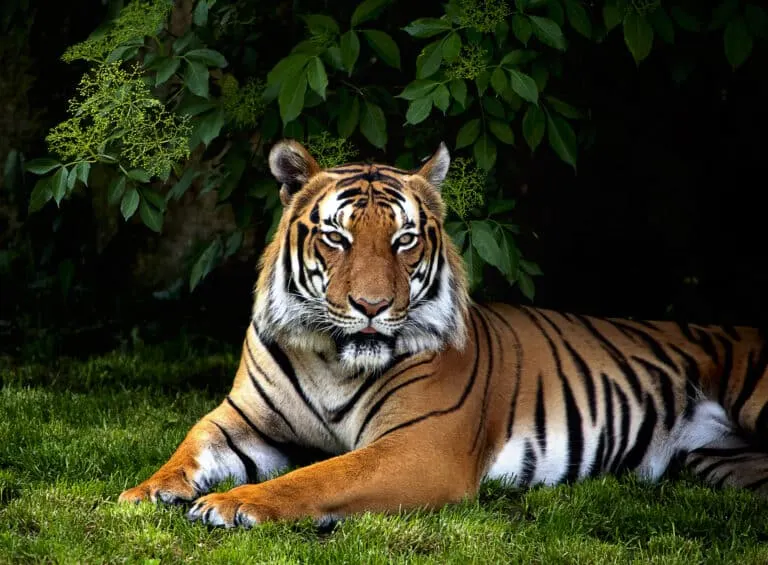
Their survival is mainly threatened by deforestation and poaching. As the forests are cut down for agriculture and plantations, tigers lose their habitat and their prey. A study found that the expansion of oil palm plantations caused nearly a 20% loss of Sumatran tiger habitat between 2000 and 2012.Besides this, there is still more poaching to meet the demand for tiger parts in illegal markets within Sumatra and Asia. Human-tiger conflicts add to the problem since sometimes tigers may kill farmers’ cattle, for which they are killed in retaliation. Researchers are working to reduce conflicts between tigers and local communities.
Hunting tigers is illegal in Indonesia, with quite serious penalties, including jail time and steep fines. Conservation efforts, such as stronger law enforcement and anti-poaching patrols, are partly helping, but substantial market for tiger parts and products remains in Sumatra and other parts of Asia. Without decisive actions, Sunda tigers could face the same fate as their Javan and Balinese counterparts, which have already gone to extinction.
Vaquita

The vaquita, the world’s rarest marine mammal, teeters on the edge of extinction. Found only in the northern waters of Mexico’s Gulf of California is also known as “The Aquarium of the World”, vaquita was classified as critically endangered by the International Union for Conservation of Nature’s (IUCN) Red List of Threatened Species in 1996.
This little porpoise was first discovered in 1958 and a little over half a century later, we are on the brink of losing them forever. Over the past decade, vaquita’s population has dropped from approximately 570 individuals to just 10, according to the International Whaling Commission (IWC), highlighting the urgent need for stronger conservation efforts.
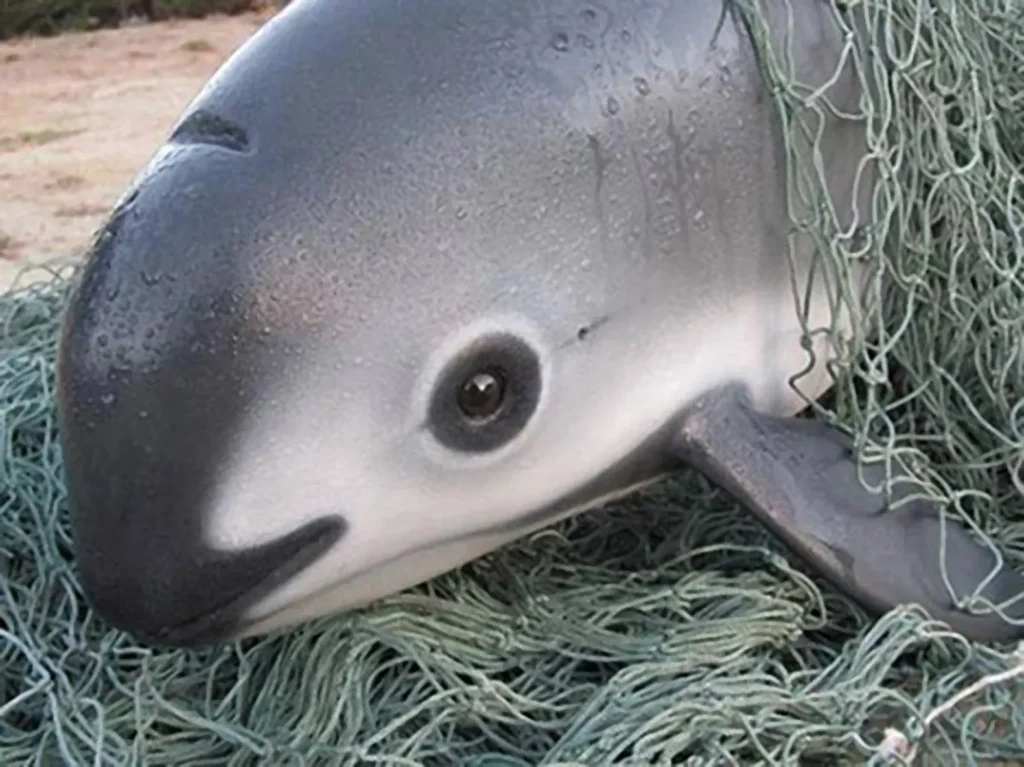
The primary threat to the vaquitas is from the illegal fishing of totoaba, a large fish highly valued for its swim bladder, sold at high prices in international markets, especially in China. Vaquitas often become accidentally entangled in the gillnets set for totoaba. Unable to free themselves, they drown because they cannot reach the surface to breathe. Fishing for totoaba in the Gulf of California has been illegal since 1975, but the high demand for the fish’s swim bladder in China has kept the totoabas continuing. Despite the ban, the lucrative black market for totoaba has continued to drive illegal fishing, putting the critically endangered vaquita at even greater risk.
The scientific committee believes that the vaquita population could recover if there is stronger enforcement of the ban on gillnets within their habitat. Immediate action to eliminate gillnets is crucial to giving this rare marine mammal a chance to rebound.
Turtle
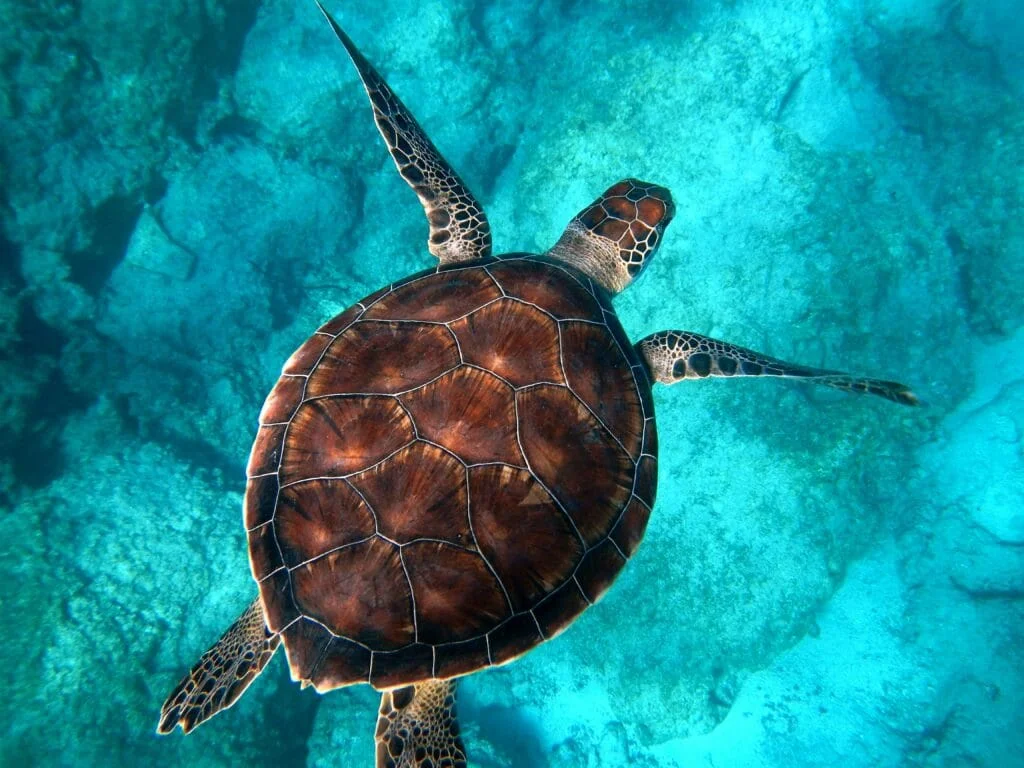
Two species of sea turtles are listed as critically endangered on the IUCN Red List of Threatened Species: the Hawksbill Turtle and the Kemp’s Ridley Turtle. he Leatherback Turtle is classified as vulnerable, though its population is decreasing, with several subpopulations nearing extinction.
Hunting is one of the biggest dangers to sea turtles, as poachers target their eggs, shells, meat, and skin. Climate change, also called global warming, creates additional problems, as the temperature of the sand where turtles lay eggs determines the sex of hatchlings. Warmer sand produces more females, and even small temperature changes could significantly skew population dynamics. The Kemp’s Ridley Turtle, the world’s most endangered sea turtle, has seen its population decrease by over 80% in the last three generations. Shrimp trawls are the greatest threat to this species, as the turtles often get caught in fishing nets and drown. Sea turtles need to reach the surface to breathe, and therefore many drown once caught in fishing gear such as nets or hooks.
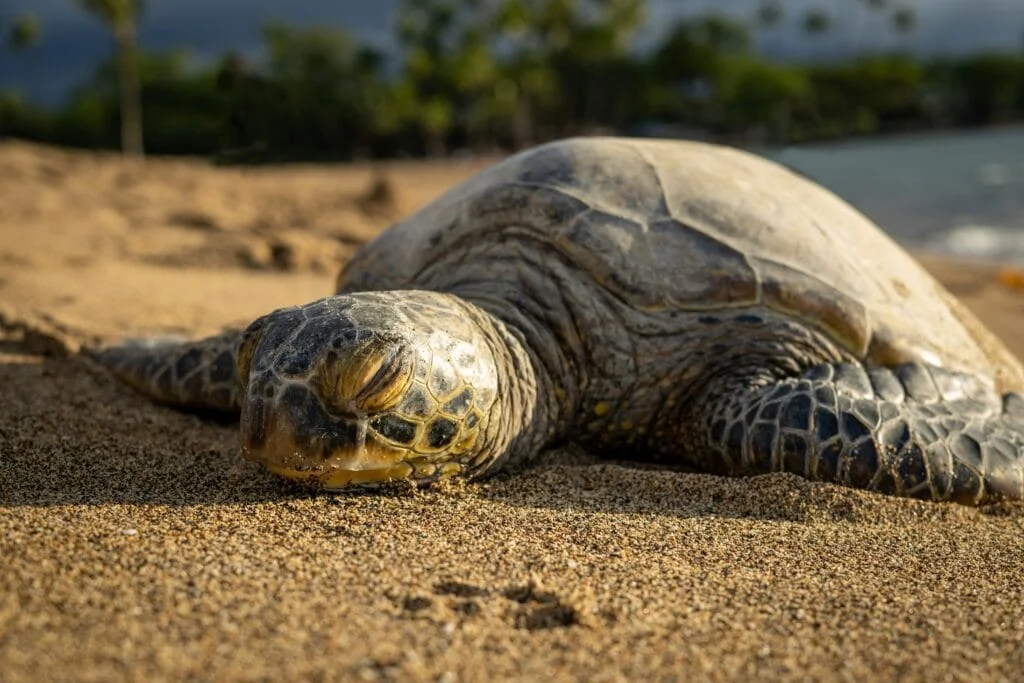
Habitat loss and pollution, like the Deepwater Horizon oil spill in 2010, have also led to significant declines. Egg harvesting for human consumption was a serious issue until conservation efforts in the 1990s helped reduce egg harvesting. The Hawksbill Turtle, another critically endangered species, is heavily targeted for the tortoiseshell trade. They are also hunted for their meat, which is considered as delicacy in some regions, and their eggs are often collected for consumption by humans and animals. Hawksbills frequently get caught in fishing nets or hooked on lines.
Further habitat loss and pollution create serious problems for hawksbill turtles. When dune plants are removed from nesting beaches, it disturbs their breeding areas. Additionally, both human and animal activities can harm nests and young turtles. Coral reefs, which are essential for these turtles, are severely threatened by climate change, coral bleaching, and pollution. Hawksbill turtles also accidentally consume plastic and other waste, which can poison them, and they are especially at risk from oil spills.
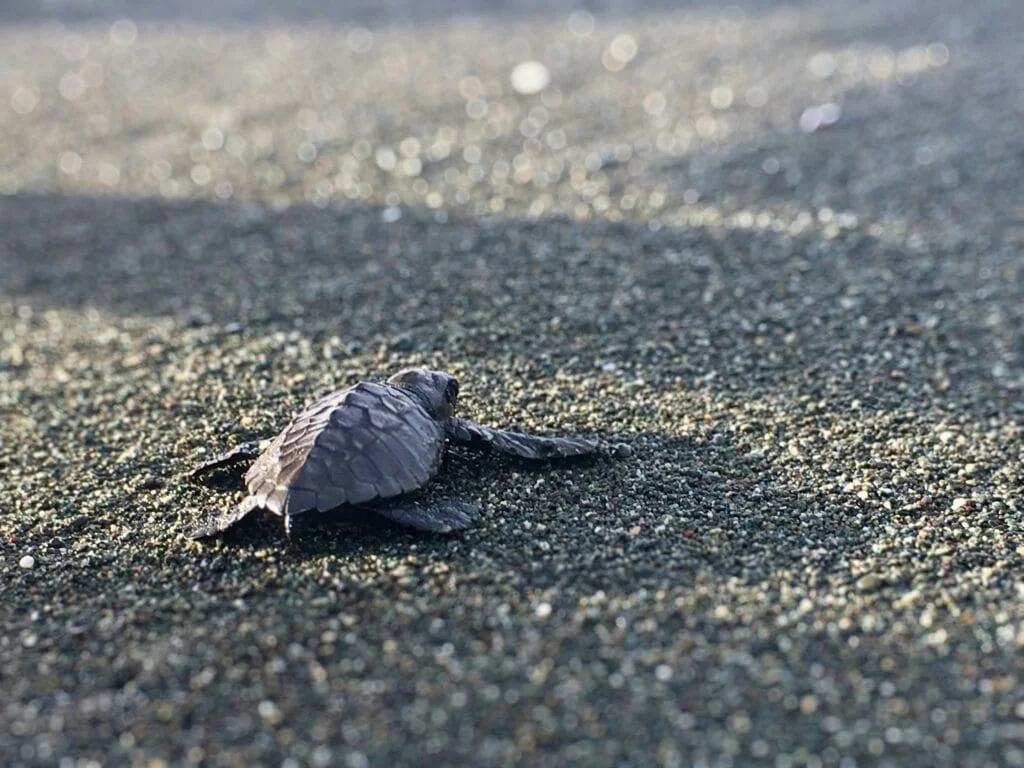
Without stronger conservation efforts, these remarkable sea turtles face a significant threat to their survival. It is vital to reduce bycatch, safeguard nesting sites, and fight against illegal trade to help prevent their extinction.
Elephant
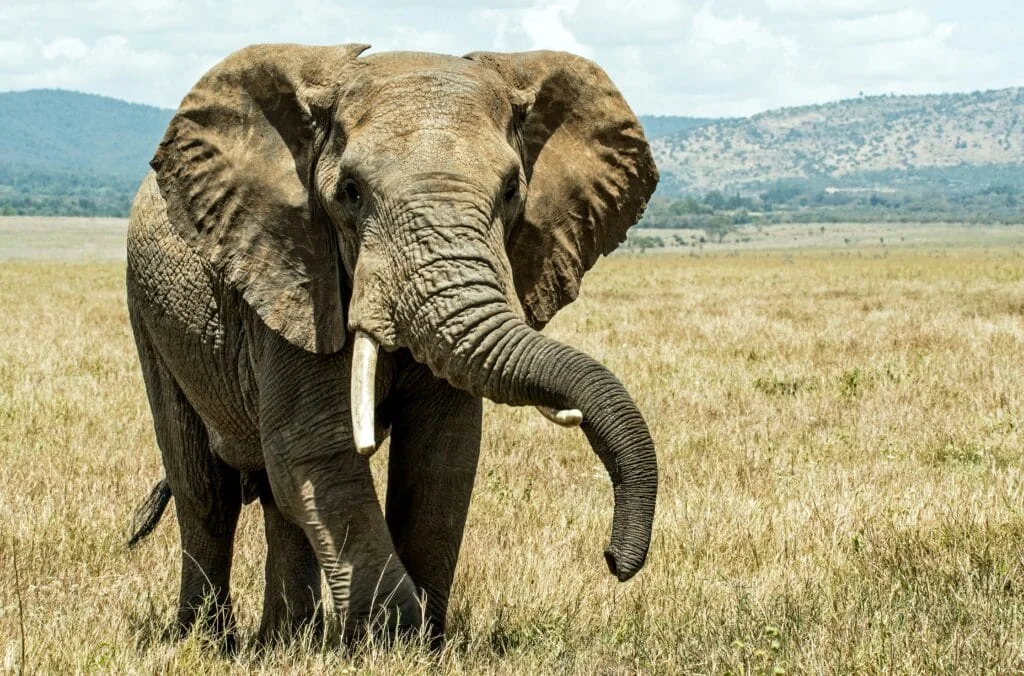
African elephants are now officially identified as two separate species: the forest elephant (Loxodonta cyclotis) and the savanna elephant (Loxodonta africana). This classification emphasizes the different traits and conservation requirements of each type. Forest elephants are smaller, have straight tusks with a pink hue, and live in West and Central Africa. On the other hand, savanna elephants are larger, lighter in color, and possess bigger, curved tusks, found in East and Southern Africa.
In the recent update of its ‘Red List’ of International Union for the Conservation of Nature (IUCN) has changed the status of both species to indicate a higher risk of extinction than before.
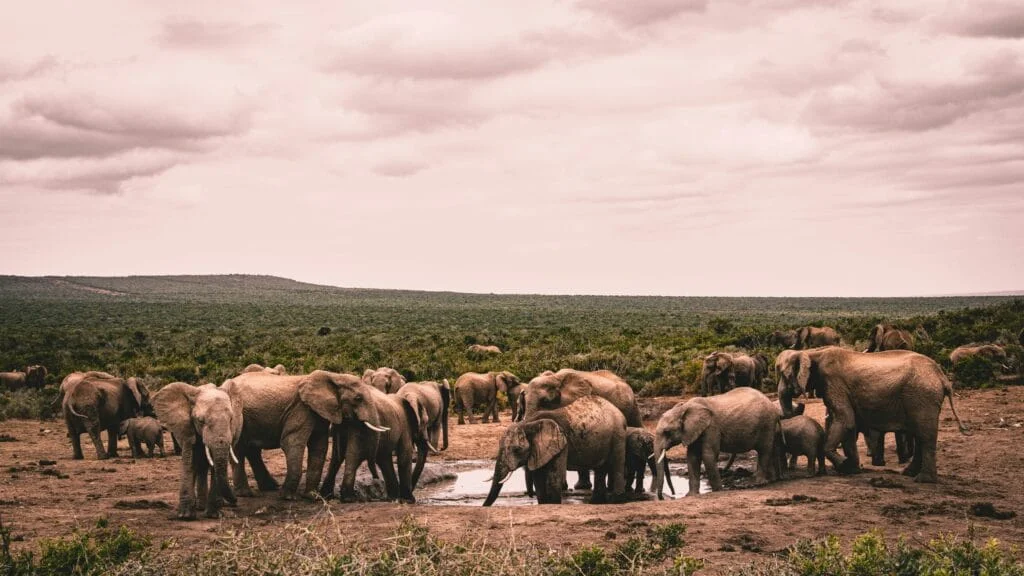
There are approximately 415,000 African elephants remaining. While they are considered vulnerable, the IUCN now lists savanna elephants as endangered and forest elephants as critically endangered due to significant threats from poaching and loss of habitat.
The situation for forest elephants is very serious, with their numbers dropping by 80% in the last three generations (93 years)and they’re still in decline today. Savanna elephants have also seen a significant decline, losing at least 60% of their population in the past 50 years. The Sumatran elephant is the most threatened, with only 2,400 to 2,800 individuals left, making them critically endangered.
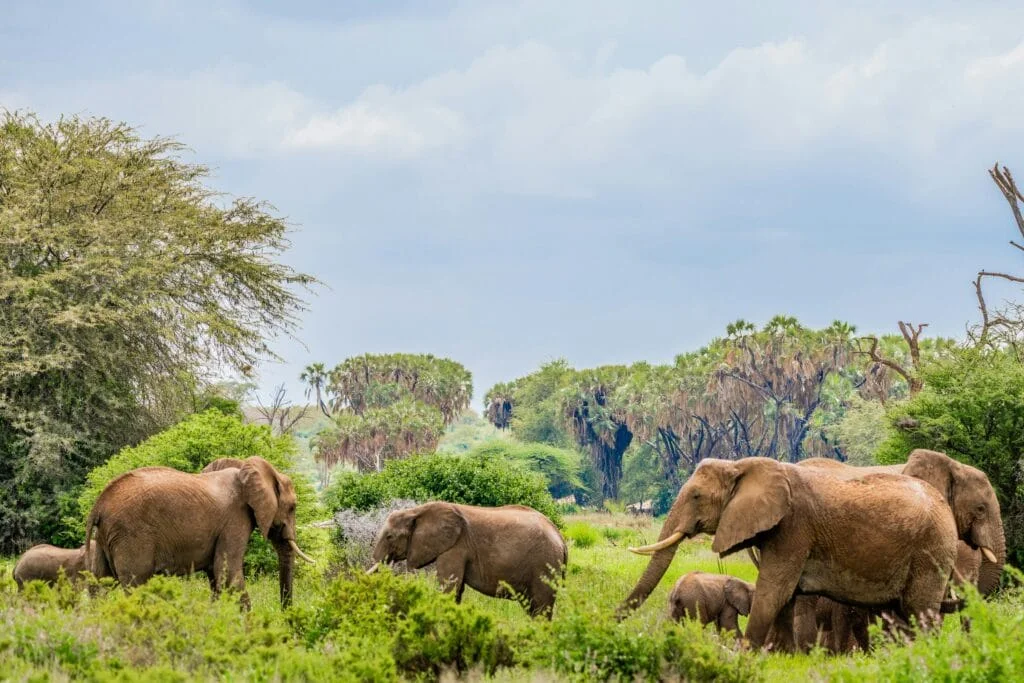
Even though CITES (Convention on International Trade in Endangered Species of Wild Fauna and Flora) banned international ivory trade in 1989, African elephants are still being poached in large numbers. In the 1980s, around 100,000 elephants were killed each year, and some areas lost as much as 80% of their herds. The ban helped some populations to recover, but a resurgence in poaching has occurred in recent years. From 2002 to 2013, 65% of forest elephants in Central Africa were killed for ivory trade, underscoring the devastating impact of poaching. The IUCN warns that these trends are continuing and may not be reversible without immediate conservation efforts.
These new classifications highlight the urgent need for better protections, habitat conservation, and stronger actions against illegal ivory trade to save these important species from extinction.



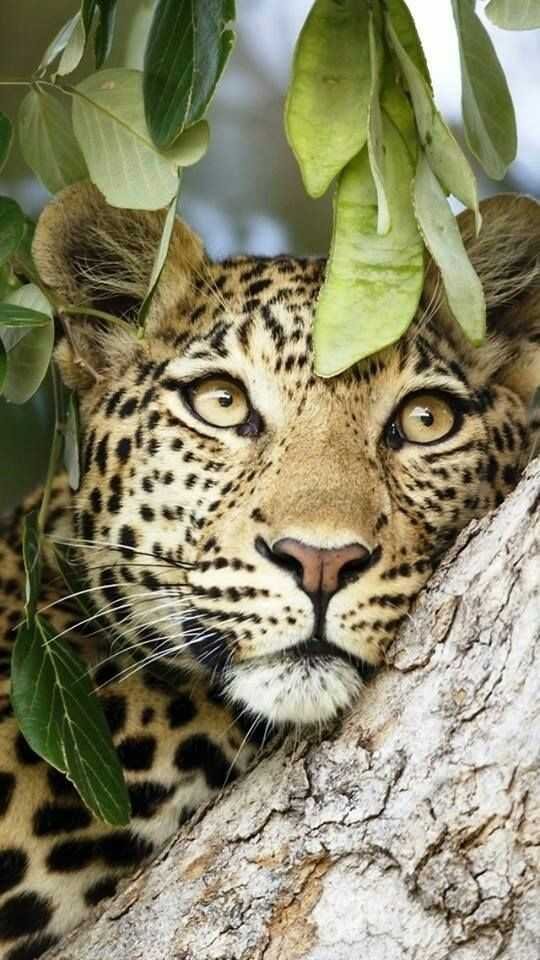
why are turtles going extinct
Because stupid people are killing/hunting them. Let’s kill all people, turtles need to rule our world. #turtlesrock…
why
Nice work keep it up
this is cooker brah
So sad i love vauqitas
So sad i love amur leopards tho😭
This is so sad. 🙁 Anyway I wrote about Amur Leopards and there is only 30 left in the wild. I wish I could help.
Turtles are going extinct because stupid people are hunting and killing them. Let’s kill all people, let turtles take over the world… #turtlesrule.
Me too girl… It’s so sad, but I’m the reason why they’re extinct. My first-born son about 20 years ago was taken while we were camping in the temperate forest of the Russian Far East and Northeast China by these dumb animals, and I never got my son back 🙁 I’ve spent every day getting my revenge MUAHAAHAH.
This sucks. The world now a days sucks. Every animal is going extinct because of all of our freaking pollution. It is NOT the circle of life because IT IS OUR FAULTS, as humans. This is terrible and we need to do better. If we don’t I swear there will not be any animals in the world.
Marcus, I know you’re hurt, but animals have rights too, killing them won’t help you get your son back. You have to get over something, it was 20 years ago, we can’t live in a world without animals
Marcus, I know you’re hurt, but animals have rights too, killing them won’t help you get your son back. You have to get over something, it was 20 years ago, we can’t live in a world without animals. They have advantages too, I’m not trying to offend you, and of course your son was special, but killing animals isn’t the answer.
It’s a pity you don’t have a donate button! I’d definitely donate to this outstanding
blog! I guess for now i’ll settle for bookmarking
and adding your RSS feed to myy Google account.
I look forward to new updates and will share this site with my Facebook group.
Chat soon!
Amur Leopards are so pretty I don’t want them to go extinct!